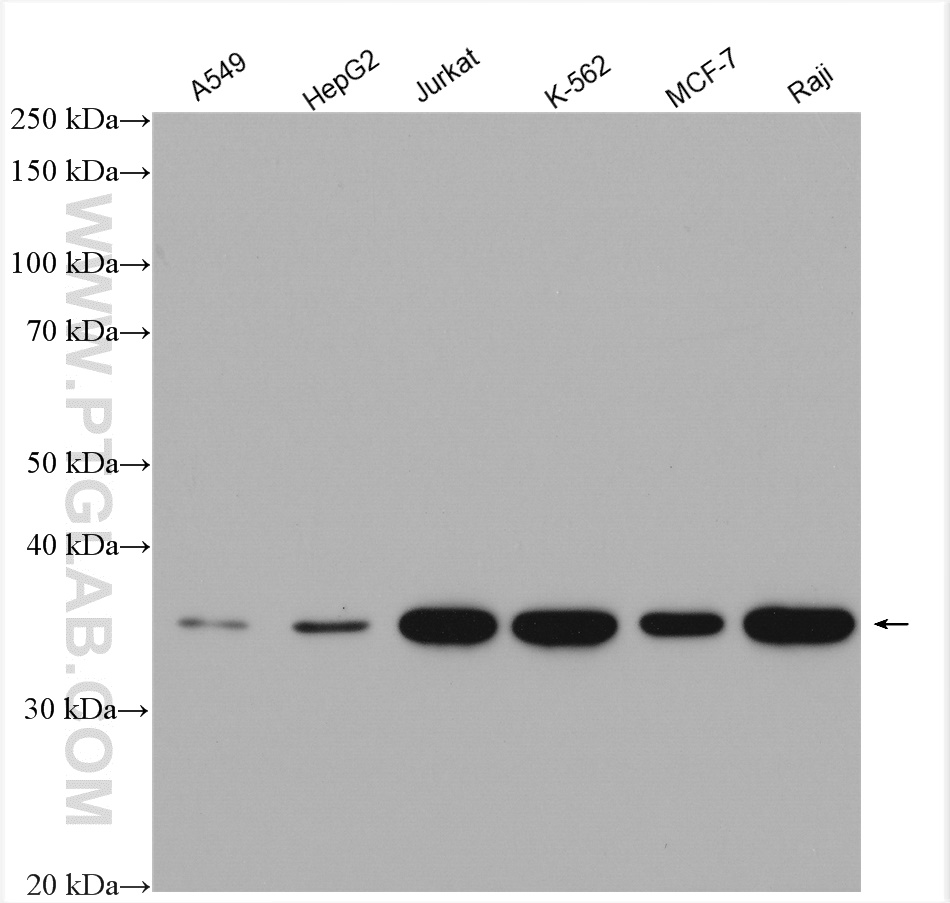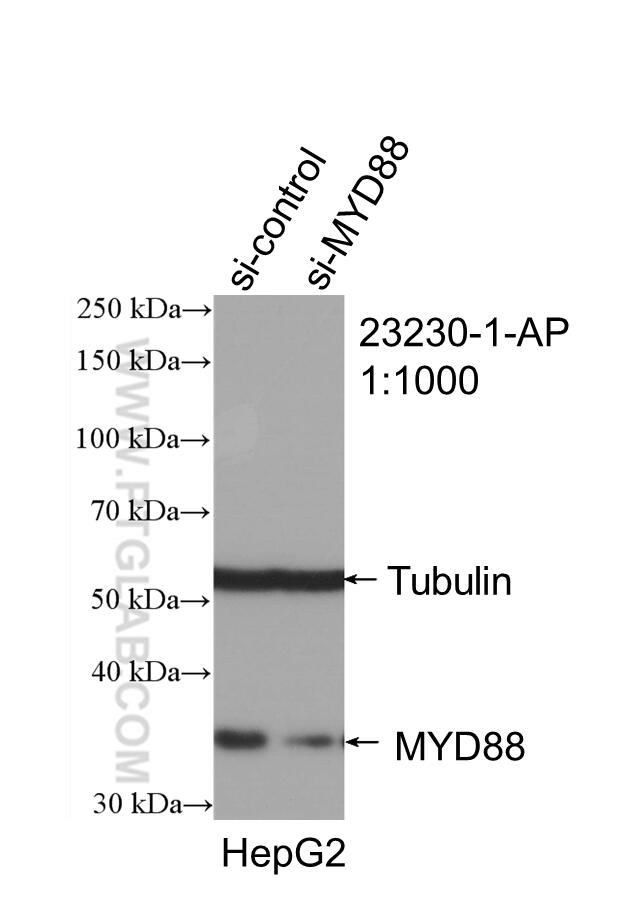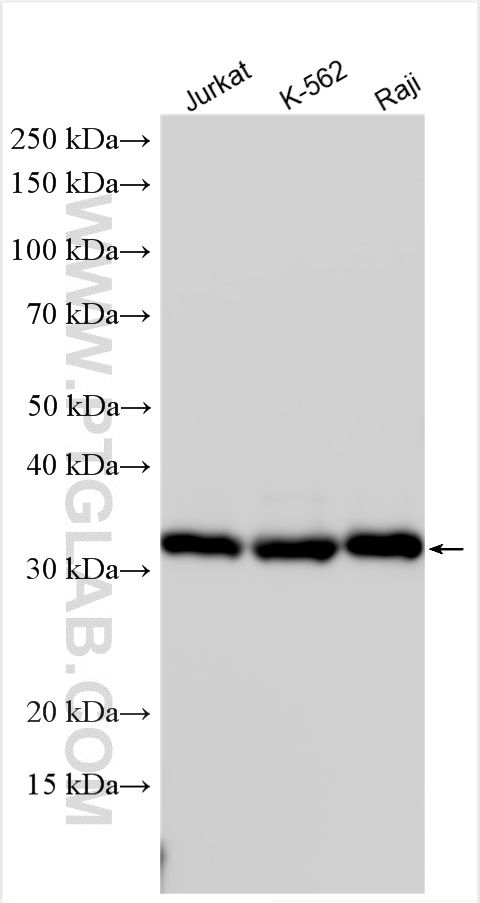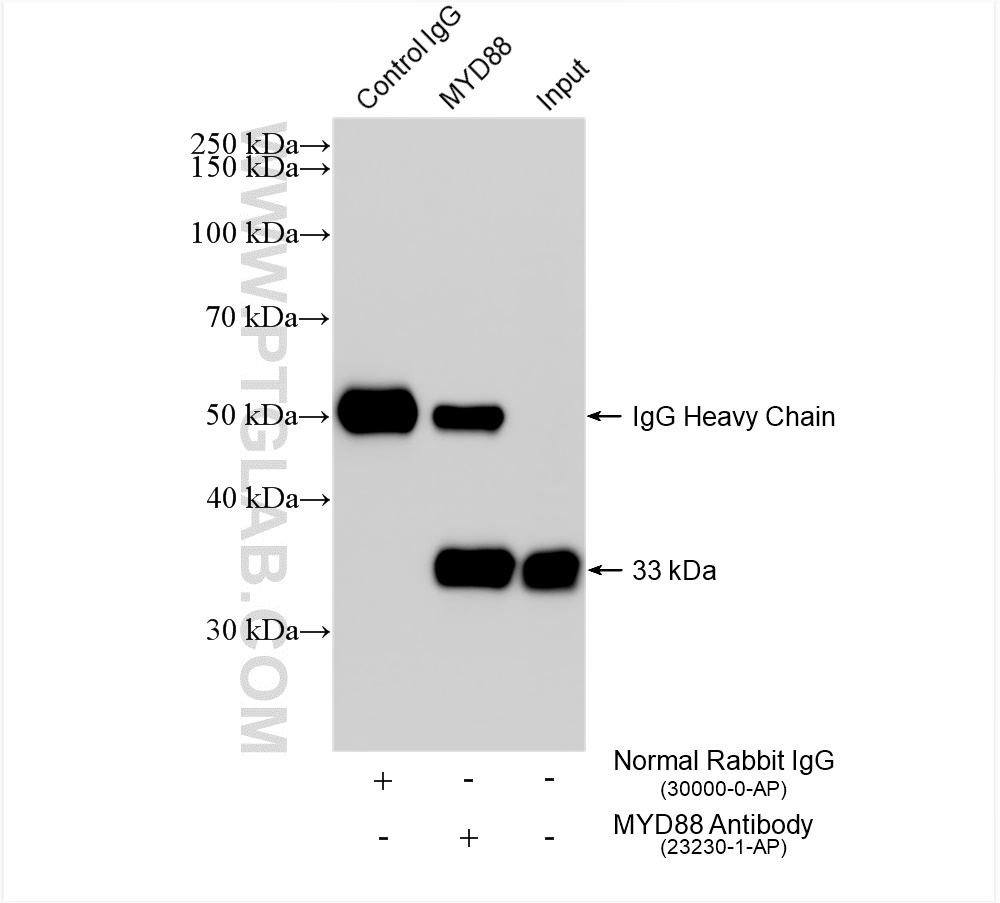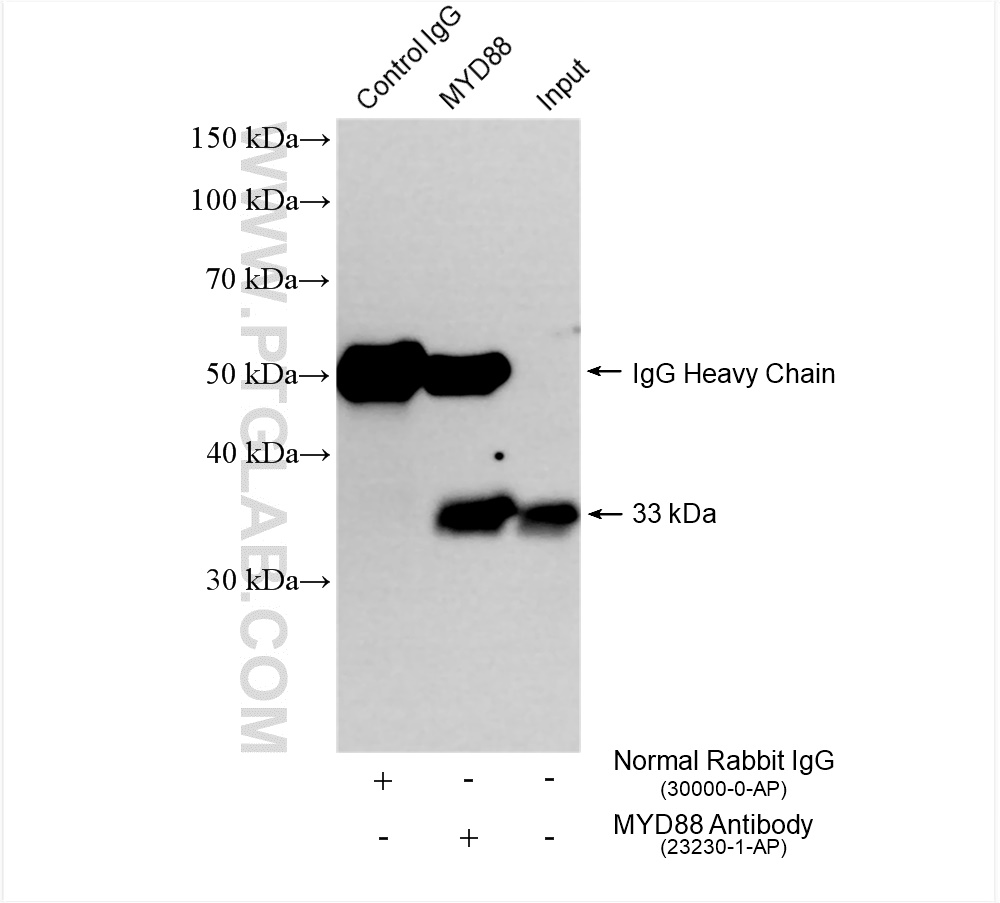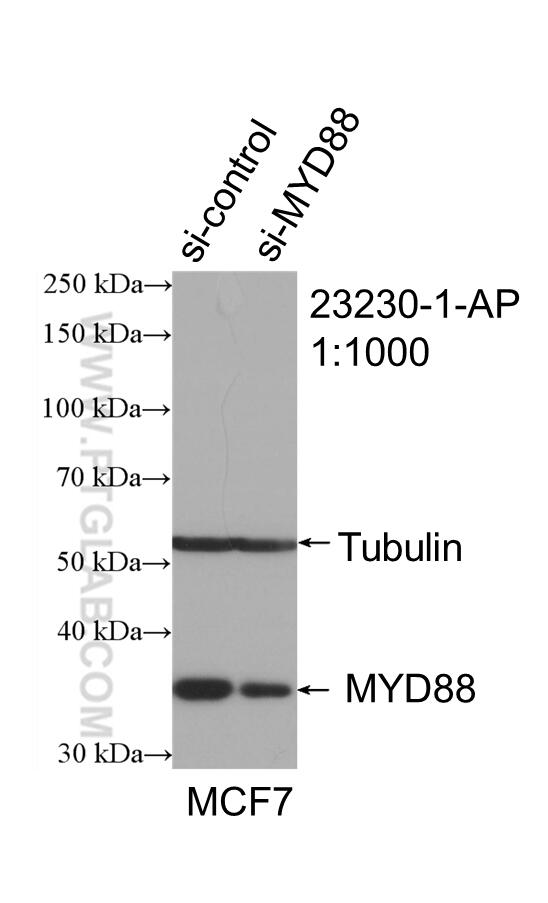验证数据展示
经过测试的应用
| Positive WB detected in | Jurkat cells, A549 cells, HepG2 cells, MCF-7 cells, K-562 cells, Raji cells |
| Positive IP detected in | K-562 cells, A549 cells |
推荐稀释比
| Application | Dilution |
|---|---|
| Western Blot (WB) | WB : 1:5000-1:50000 |
| Immunoprecipitation (IP) | IP : 0.5-4.0 ug for 1.0-3.0 mg of total protein lysate |
| It is recommended that this reagent should be titrated in each testing system to obtain optimal results. | |
| Sample-dependent, Check data in validation data gallery. | |
产品信息
23230-1-AP targets MYD88 in WB, IHC, IF, IP, CoIP, ELISA applications and shows reactivity with human samples.
| Tested Applications | WB, IP, ELISA Application Description |
| Cited Applications | WB, IHC, IF, IP, CoIP |
| Tested Reactivity | human |
| Cited Reactivity | human, pig, canine, monkey, chicken, bovine, sheep |
| Immunogen | MYD88 fusion protein Ag19770 种属同源性预测 |
| Host / Isotype | Rabbit / IgG |
| Class | Polyclonal |
| Type | Antibody |
| Full Name | myeloid differentiation primary response gene (88) |
| Synonyms | MYD88, MYD88D |
| Calculated Molecular Weight | 33 kDa |
| Observed Molecular Weight | 33 kDa |
| GenBank Accession Number | BC013589 |
| Gene Symbol | MYD88 |
| Gene ID (NCBI) | 4615 |
| RRID | AB_2879236 |
| Conjugate | Unconjugated |
| Form | Liquid |
| Purification Method | Antigen affinity purification |
| UNIPROT ID | Q99836 |
| Storage Buffer | PBS with 0.02% sodium azide and 50% glycerol pH 7.3. |
| Storage Conditions | Store at -20°C. Stable for one year after shipment. Aliquoting is unnecessary for -20oC storage. |
背景介绍
Myeloid differentiation primary response 88 (MYD88) is an adapter protein critical to the innate and adaptive immune response.
What is the molecular weight of MYD88?
The molecular weight of MYD88 is 33 kDa.
What is the cellular localization of MYD88?
The subcellular localization of MYD88 is largely confined to the cytoplasm as condensed forms or aggregated structures.
What is the role of MYD88 in the IL-1R signaling pathway?
MYD88 plays a major role in the inflammatory signaling pathways downstream of Toll-like receptor (TLR) and interleukin-1 receptor (IL-1R) families. MYD88 links these receptors to IL-1R-associated kinases (IRAK), such as IRAK1 and IRAK2, via protein-protein interactions. The C-terminal TIR domain of MYD88 mediates the interaction with the receptors, whereas the N-terminal death domain of MYD88 associates with IRAK family members (PMID: 25580251). MYD88 acts via its intermediate domain to phosphorylate and thus activate IRAK1, IRAK2, IRF7, and TRAF6 to trigger NF-kappa-B signaling and cytokine secretion as part of the inflammatory response (PMID: 19679662).
What is MYD88's involvement in disease?
Defects in MYD88 due to deficiency of the protein leads to recurrent pyogenic bacterial infections, including invasive pneumococcal disease. Patients usually die between 1 and 11 months of age, but surviving patients are otherwise healthy with normal resistance to other microbes (PMID: 18669862). Mutations in the MYD88 gene also lead to the development of cancers such as lymphoma (PMID: 21179087) and some autoimmune disorders like ulcerative colitis (PMID: 24189845).
实验方案
| Product Specific Protocols | |
|---|---|
| WB protocol for MYD88 antibody 23230-1-AP | Download protocol |
| IP protocol for MYD88 antibody 23230-1-AP | Download protocol |
| Standard Protocols | |
|---|---|
| Click here to view our Standard Protocols |
发表文章
| Species | Application | Title |
|---|---|---|
Adv Mater Manganese@Albumin Nanocomplex and Its Assembled Nanowire Activate TLR4-Dependent Signaling Cascades of Macrophages | ||
Mol Cell CPT1A induction following epigenetic perturbation promotes MAVS palmitoylation and activation to potentiate antitumor immunity
| ||
Mol Cell Serine synthesis sustains macrophage IL-1β production via NAD+-dependent protein acetylation | ||
Adv Sci (Weinh) OR11H1 Missense Variant Confers the Susceptibility to Vogt-Koyanagi-Harada Disease by Mediating Gadd45g Expression | ||
Gut Microbes Fusobacterium nucleatum promotes esophageal squamous cell carcinoma progression and chemoresistance by enhancing the secretion of chemotherapy-induced senescence-associated secretory phenotype via activation of DNA damage response pathway | ||
Nucleic Acids Res The N6-methyladenosine RNA-binding protein YTHDF1 modulates the translation of TRAF6 to mediate the intestinal immune response. |
